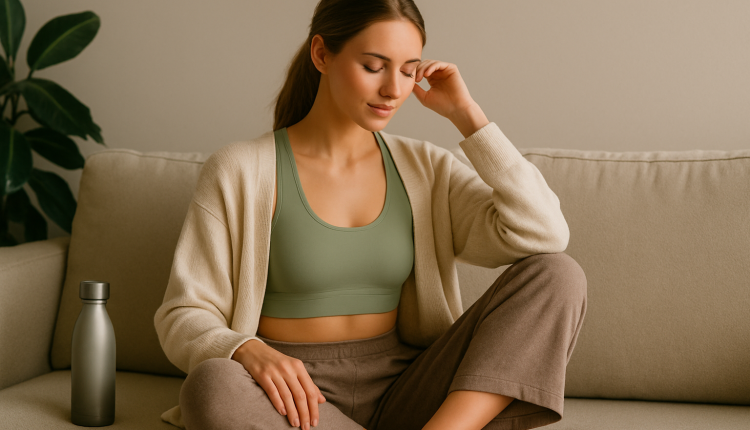In 2025, wellness no longer lives only in yoga studios or green smoothie cafés—it’s weaving into the threads of our closets. As athleisure evolves, a new wave of style-conscious self-care is emerging. Wellness-dedicated readers ask: how can our wardrobe boost both comfort and well-being? The answer lies in mindful fashion habits—small everyday choices with big physical and mental payoffs.
1. Fabric Meets Function: Comfort-First Materials
Technical fabrics are going mainstream. Memory-knit blends (think bamboo-touch, lightweight compression, moisture-wicking) now appear in everyday attire—pants, tees, lounge sets—so comfort and breathability are standard, not luxury. These materials support natural movement, prevent chafing, and help regulate temperature—from morning errands to after-work wind-downs.
2. Slow Fashion, Active Lives
Mindful shopping is trending. Consumers are looking for certified low-impact garments with transparent sourcing and long-lasting design. Labels offering biodegradable activewear or upcycled heathered knits are gaining traction. Wellness-grounded style isn’t season-bound—it’s purposeful and built to last.
3. Wearable Wellness Tech: Discreet & Chic
Wellness tech has shed its clunky image. Smart rings, sleek wearable patches, discreet posture sensors—these are becoming jewelry-adjacent, offering health insights with barely-there design. They track sleep, recovery metrics, hydration, and even stress levels, merging wellness monitoring with accessory appeal.
4. Calm Color Spots & Nature Hues
Soft pastels, muted earth tones, moss green and terra-cotta are defining palettes this season. These “calm colors” are borrowed from wellness design principles to ease the eye and soothe the mind. Whether in ribbed lounge tops or structured sandals, these shades create a sense of ease—cutting through visual noise of fast fashion.
5. Multi-Functionality & Modularity
Less is more. Wellness-focused wardrobes now favor pieces that serve multiple purposes—like a jacket that transforms into a pillow, or convertible bags that carry yoga mats easily yet fold flat for travel. Hygienic antimicrobial linings in warmth wraps or socks further support wellness on the go.
6. Ritual Reminders Through Style
Wellness is ritual, and clothes are cues. Wearing a “morning routine” robe activates self-care after waking. Donning a soft, easy-fit pullover for evening walks signals time to slow down. These simple rituals, woven into dressing habits, build consistency in healthier daily rhythms.
7. Community Through Shared Style
Brand-led virtual events are connecting wellness-minded followers. Live livestreams for group stretches, mindful knitting circles, or minimalist wardrobe audits create belonging. As LilyAI notes, social media significantly shapes fashion–wellness trends, with TikTok wellness tags reaching billions of views. This community-driven approach fosters accountability and normalizes healthy routines.
8. Skin Health in Textile Choices
Textiles that come into skin contact are under fresh scrutiny. Zinc-infused fabrics, seaweed-based yarns, and temperature-regulating blends offer tangible skin health benefits. SCMP reports rising interest in how garments impact skin—especially regarding SPF textile coatings and dermatological health . In 2025, it’s not just what you eat, but also what you wear.
Why This Matters
Integrating wellness into fashion empowers individuals to care for themselves effortlessly—reducing decision fatigue and embedding healthful behaviors into daily life. Over time, fabric choices, colors, and clothing rituals can enhance energy, reduce stress, and reinforce positive habits.
How To Apply It
-
Revamp your wardrobe with at least one item in a calming hue or soft technical fabric.
-
Streamline purchases to modular, multifunctional pieces.
-
Use clothing as cues: decide which garment signals exercise, winding down, or meetings.
-
Look for wearable wellness inserts, like posture patches or sleep trackers.
-
Join virtual style-wellness events to build supportive ritual networks.
Final Thought
Wellness-driven fashion is more than a trend—it’s a lifestyle. It proves style can nurture both body and mind. As conscious designers and consumers continue to align, garments will become tools of care, comfort, and clarity. In 2025, taking care of ourselves begins not only with what we eat or how we move—but also with what we choose to wear.


